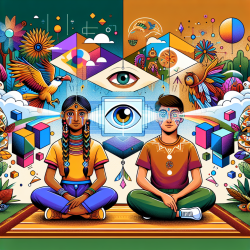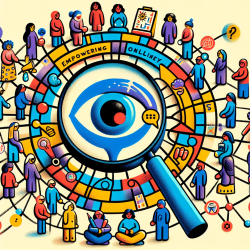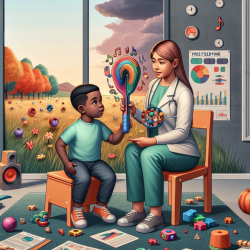Introduction
In the realm of adolescent mental health, creating culturally relevant and effective interventions is crucial. The research article "Application of Two-Eyed Seeing in Adolescent Mental Health to Bridge Design Thinking and Indigenous Collective Storytelling" provides a novel approach to integrating Indigenous perspectives with Western methodologies. This blog explores how practitioners can enhance their skills by adopting the Two-Eyed Seeing approach to improve outcomes for Indigenous youth.
Understanding Two-Eyed Seeing
Two-Eyed Seeing is a framework that combines the strengths of Western methodologies with Indigenous knowledge systems. It involves seeing the world through both lenses to create a holistic understanding. This approach is particularly beneficial in mental health, where cultural sensitivity and inclusivity are paramount.
Research Insights
The study involved Indigenous youth participating in Design Circles to co-create stories about their experiences accessing mental health care. These narratives highlighted the challenges faced by Indigenous youth, including systemic racism and cultural barriers. By integrating Indigenous storytelling with design thinking, the research identified key usability preferences for digital mental health tools.
Practical Applications for Practitioners
Practitioners can leverage the insights from this research to enhance their practice in several ways:
- Adopt a Two-Eyed Seeing Approach: Integrate Indigenous perspectives into mental health interventions to ensure cultural relevance and effectiveness.
- Engage in Collective Storytelling: Use storytelling as a tool to understand the lived experiences of Indigenous youth and to inform the design of mental health resources.
- Focus on Cultural Safety: Ensure that digital mental health tools are designed with cultural safety in mind, incorporating Indigenous symbols, stories, and wellness practices.
Encouraging Further Research
While this study provides valuable insights, further research is needed to explore the full potential of Two-Eyed Seeing in mental health care. Practitioners are encouraged to collaborate with Indigenous communities to co-create interventions that are both culturally safe and effective.
Conclusion
The Two-Eyed Seeing approach offers a promising pathway for improving mental health outcomes for Indigenous youth. By integrating Indigenous knowledge with Western methodologies, practitioners can create interventions that are not only effective but also culturally resonant. To delve deeper into the research, please read the original research paper: Application of Two-Eyed Seeing in Adolescent Mental Health to Bridge Design Thinking and Indigenous Collective Storytelling.










